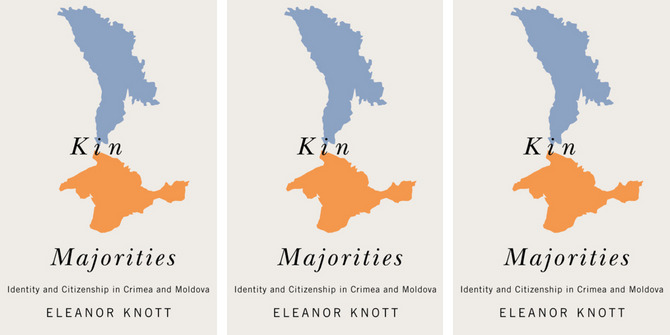
Economics and political economy lack the analytical tools to explain the differing impact of the recent international financial crisis that erupted in 2007 on developed economies. The principal aim of this edited volume is to offer a ‘market-based banking’ framework which transcends the dominant dichotomous understanding of financial systems in terms of credit-based and capital-based. Market-Based Banking attempts to provide a framework that is more reflective of banking in modern financial systems; one that provides a more successful explanation of the differential impact of the recent financial crisis. Reviewed by Roger McCormick.
Market-Based Banking & the International Financial Crisis. Iain Hardie and David Howarth (eds.). Oxford University Press. August 2013.
This book is based on a collection of papers written by political economists and derived from three workshops held in the period 2009-2012 in Edinburgh and Victoria, British Columbia. (The Editors both have connections with the University of Edinburgh). The financial systems of, and the experience of the Crisis in, eleven different countries are considered: UK, USA, Canada, Belgium, France, Germany, Italy, Spain, Greece, Holland and Japan.
The title invites us to consider that “market-based banking” (MBB) was in some way responsible for the Crisis and there are various suggestions throughout the text that this is the case although, at the outset, the book’s objective seems to be more modest: to introduce a third analysis of how modern financial systems work (MBB) to be considered in addition to the traditional “dichotomy” of bank credit and capital markets- based methods of funding (attributed to a 1983 work by John Zysman). The authors of the Introduction (Hardie, Howarth, Sylvia Maxwell and Amy Verdun) are critical of this dichotomy and argue that it “has contributed to the widespread intellectual incapacity to grasp the nature of changes to national financial systems and to explain, much less predict, the differential impact of the recent financial crisis on advanced industrial economies.” They also assert that the rise of MBB “has undermined the analytical usefulness of the bank-based/capital market-based dichotomy”.
We are told about the “dichotomy” and how MBB contrasts with it at a number of points in the text (there is quite a bit of repetition), with the definitive comparison being set out in the Introduction. The “bank-based” arm of the dichotomy is, in short, traditional commercial banking funded by retail deposits. The second model, dominating the “capital market-based” system, involves banks that “underwrite initial stock or bond offerings” and “fee-taking brokers buying and selling those stocks” either for customers or on their own account. MBB, however, involves banks that “rely on the market to enable their lending in a variety of ways”. This model, to a greater or lesser extent (according to the country) exists alongside the more traditional “dichotomy”. MBB is a “credit-driven model” reliant for the most part on short term funding in financial markets (e.g. the London Inter-bank market) or “originate to distribute” techniques such as securitisation. Such sources of funds are now perceived to be more “skittish” (likely to get nervous and seek the return of funding when things get rough) than the more “sticky” traditional retail deposit base (depositors being notoriously reluctant to change banks even when treated badly unless a Northern Rock-style bank run/panic gets under way). One reason for the “stickiness” of retail deposits, of course, is that they are usually guaranteed by government (up to a fairly high amount) …but the book does not examine this aspect.
The other side of the coin represented by the advance of MBB is the decline of “relationship banking” and the advent of the so-called “sales culture”, criticised by many as being a cause (or symptom?) of the decline in “culture” in banks and bank behaviour generally. The authors of Chapter 3 (by Hardie and Maxfield and concerned with the UK and the USA ….featuring a title that describes MBB as “the Worst of All Worlds”) are also concerned about this development in that (in MBB) “financial institutions that intermediated amongst themselves in an increasingly concentrated sector, lacked the stabilizing connection to household savers through deposits, and were increasingly disconnected from corporate borrowers.” The markets (at least in the UK and USA) became “characterized by opacity, liquidity vulnerability, and risk concentration.” The point is also made, elsewhere in the book, that the decline in relationship banking (inherent in the rise of MBB, it is argued) brought with it the decline of banks as a source of “patient capital”, i.e. funders who would not panic and ask for their money back at the first sign of difficulty.

The most serious problem associated with MBB, however, as revealed in the early stages of the Crisis (the “credit crunch”) is that excessive reliance on wholesale market funding can quickly lead to an acute liquidity crisis, which in the most severe cases can then bring on insolvency (as Northern Rock discovered). “Skittish” friends tend to be of the fair weather variety.
Students of the Crisis at this point might well be saying: this is all very well, but didn’t we know this already? It is, perhaps, a shortcoming of the book that, at times, it does not seem to acknowledge that, notwithstanding the original scholarly research that supports many of its claims, it is not exactly exploring virgin territory. It is odd, for example, that well-known existing analyses of the Crisis, such as the Turner Review and the de Larosiere Report do not receive any mention. There is also a tendency to describe MBB as if it were a relatively new phenomenon; but the funding of international debt finance (through what we used to call the Eurodollar market) has been happening on an MBB basis for over forty years. It may well be, however, that all this is new (as the book suggests) to the world of political economists…in which case the book certainly provides a useful, and somewhat overdue correction.
The book’s strength lies in its comparative survey of the impact of MBB and the Crisis on different countries. We have become accustomed to the idea that, for example, Spain got into difficulties because of imprudent property lending, that German banks are more relationship-based than others, that Canada (entertainingly described as “Cool Canada” but also coming across as somewhat cosy, comfortable and conservative) had a “good” Crisis because of its more traditional approach to regulation (which, arguably, underpins a fairly uncompetitive system), that the Low Countries suffered from similar problems to the UK and USA, that Greece had a fatal cocktail of poor regulation, “creative” public accounting, and widespread corruption…and so on. The book provides an admirably detailed analysis of precisely how different models of financial system in these various countries fared in the Crisis and the role that MBB played in each (with different facets of MBB becoming apparent).
There are some issues that could have been covered more thoroughly. The fact that the UK’s biggest bank disaster in the Crisis (RBS) was due to an ill-advised takeover receives only a sentence. This does not quite fit with the theory that MBB was a key cause (even though it was present at the scene of the crime). You do not have to be heavily into MBB to embark on fatal acquisitions (see: Co-op Bank). The euro crisis is also virtually ignored. The ongoing problems of Greece, Italy etc. are due in large part to the fact that the devaluation/default option is not available as a cure for unsustainable levels of sovereign (or, as some would have it, “sub-sovereign” ) debt. This is because they do not have control of their own currency, the euro, which is also the currency in which so much of that debt is denominated. Compared to this problem, the supposed malign influence of aspects of MBB seems trifling.
Whatever its minor blemishes, the book is certainly a useful addition to any library documenting the worst financial crisis of modern times.
—————————————–
Roger McCormick is the Director of the Sustainable Finance Project at London School of Economics and Political Science, and a Visiting Professor at LSE. He is the author of Legal Risk in the Financial Markets (Oxford University Press, 2nd ed. 2010). He retired from full-time private legal practice in 2004, having practised law in the City of London for nearly thirty years. Roger is also the Director of the LSE Conduct Costs Project blog. Read reviews by Roger.








1 Comments